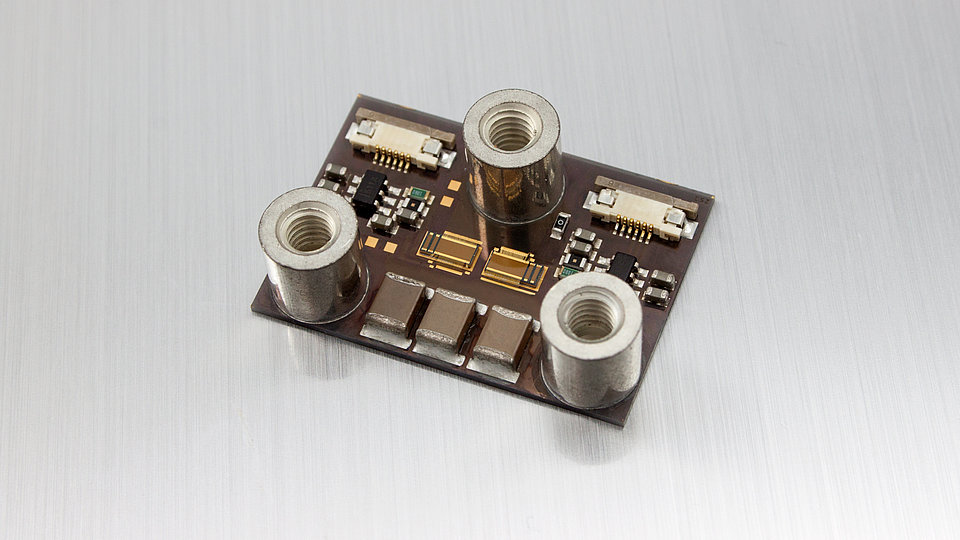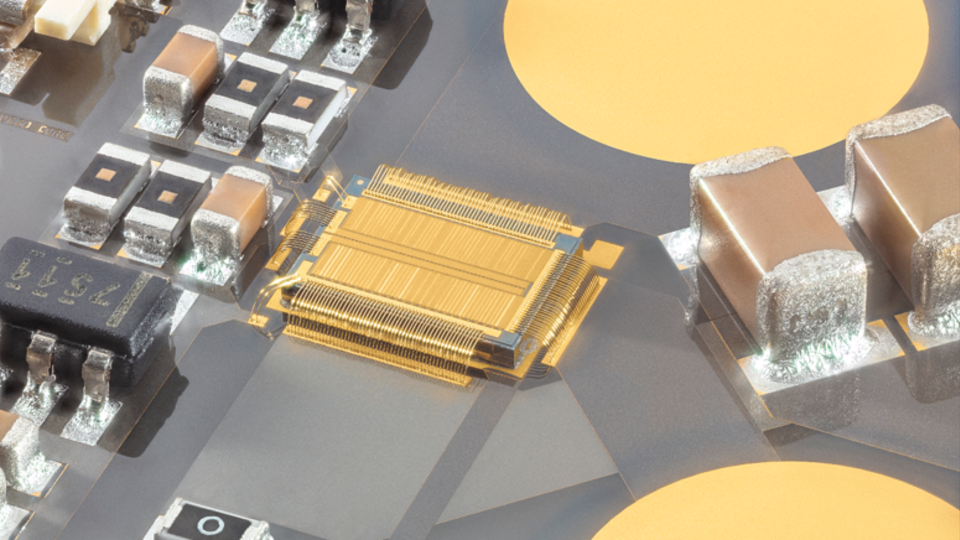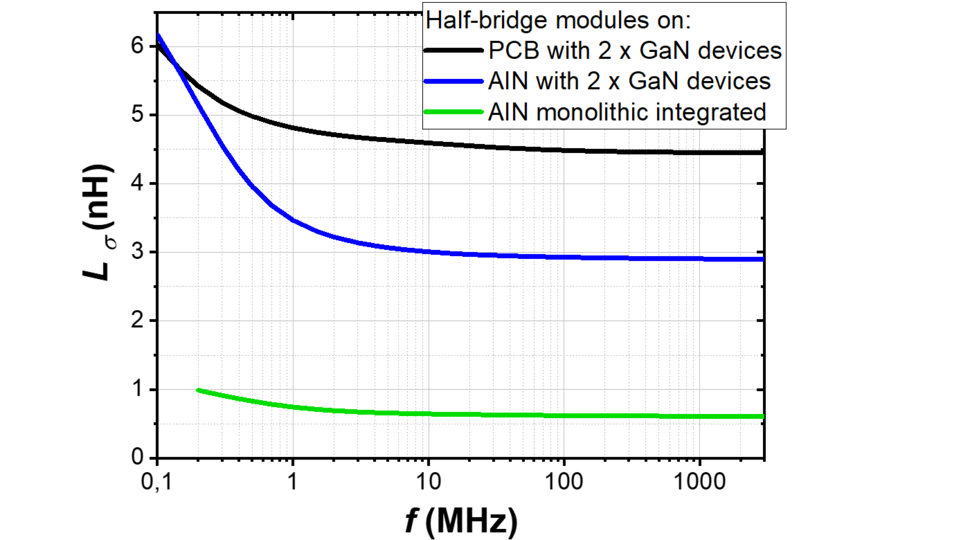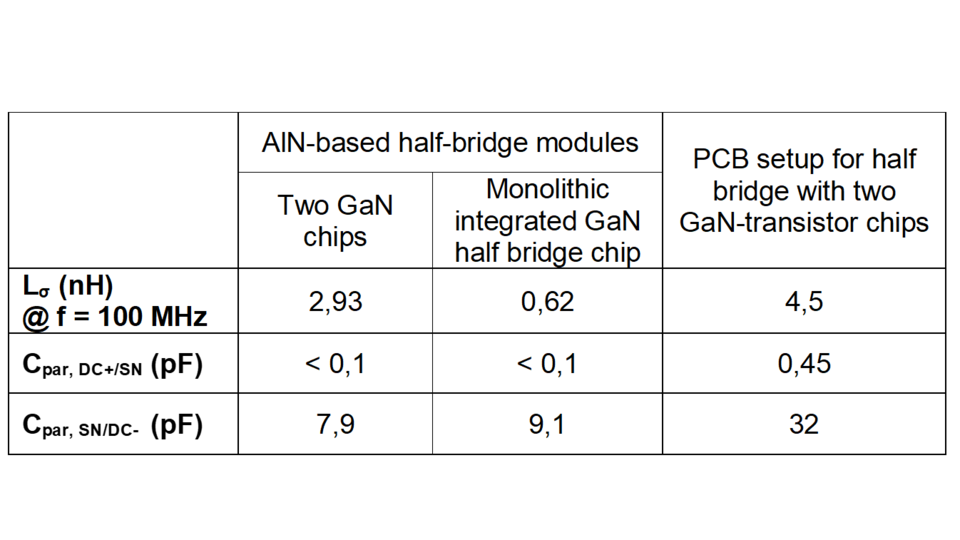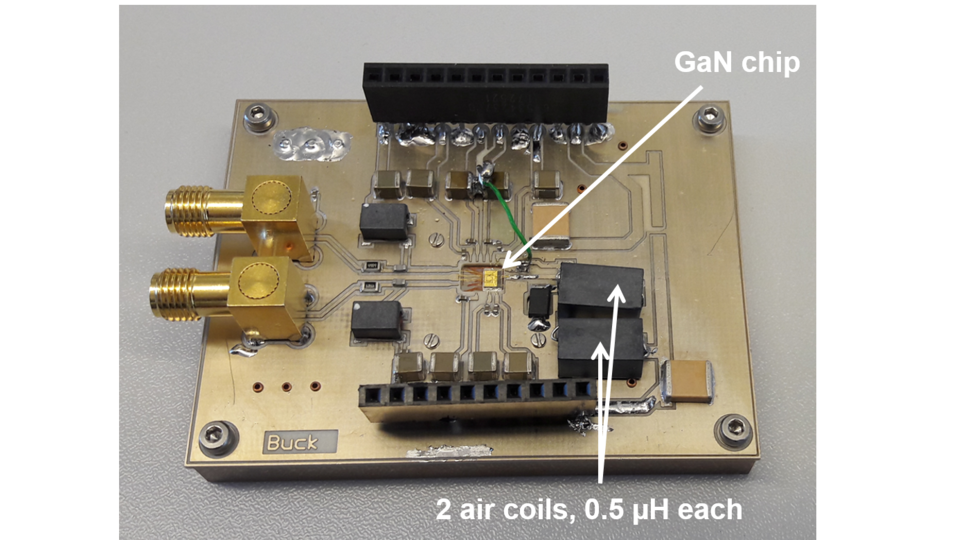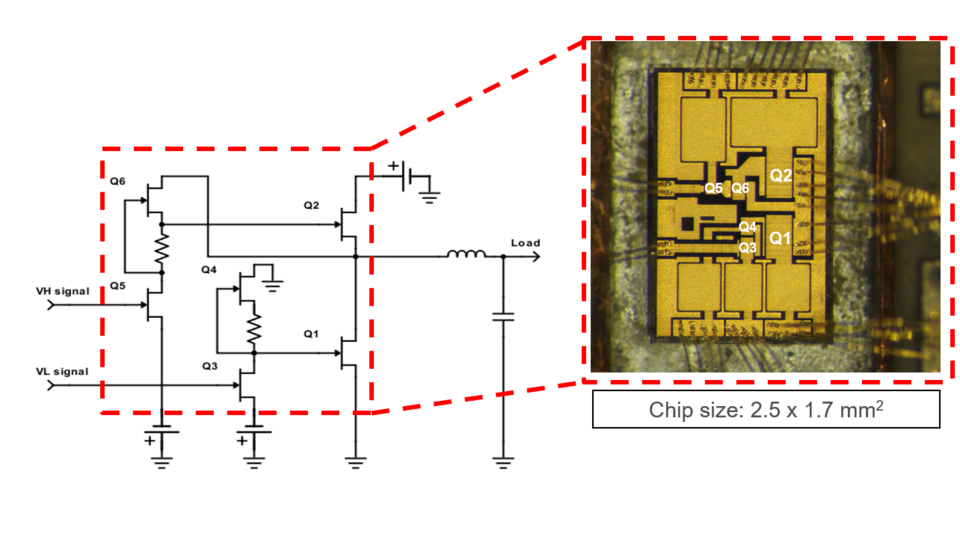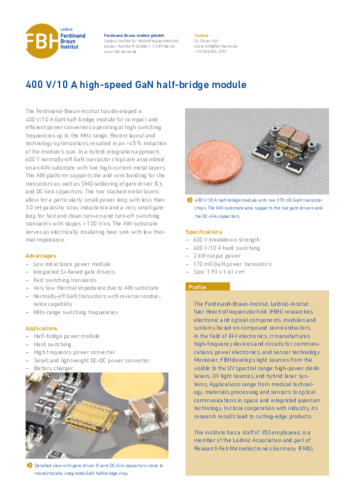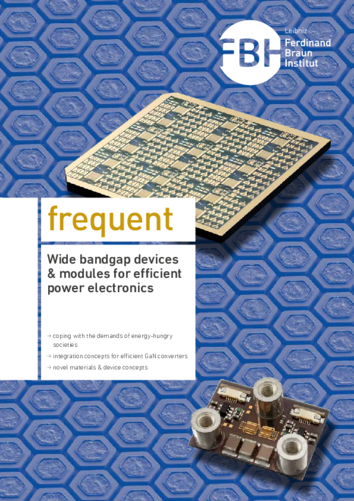Fast Switching GaN Power Cores
Lateral GaN transistors feature very high cut-off frequencies up to the 10 GHz range because of their very small device capacitances and their small gate charge. That's why they are an optimum choice for very compact but still efficient power converters that operate at high switching frequencies. In fact, the converter switching frequency is very often more limited by parasitic inductances and capacitrances of the device packages and the PCB rather than by the GaN power transistors themselfs.
As consequence, a switching environment with low parasitics as well as with low thermal impedance - so called fast power cores - is the key for benefiting from the inherent advantages of GaN-based power switches and to realize new converters with increased power density. For this, we use hybrid mounting schemes on AlN-based submounts as well as monolithic device integration on the GaN die.
GaN power core on AlN submount
Detail of an AlN-based GaN power core with a GaN half-bridge chip, gate drivers and DC-link capacitors
FBH’s GaN-based 650 V switching transistors feature a particularly low gate charge and a low output capacitance that may result in 400 V switching transients of down to 200 V/ns slew rate. Already small parasitic inductances and capacitances may already trigger oscillations during the switching events and increase switching losses.
We developed GaN half-bridge modules with very low parasitic inductances by using FBH front-end and back-end processing technologies. Besides the GaN chips the module supports the gate driver ICs and DC-link capacitors in a hybrid assembly approach. The submount made of aluminium nitride ceramic allows for optimum cooling. The combination of active and passive SMD devices and wire-bonded GaN dies with two high-current metal layers enables minimum parasitics and very small gate loops as well as small power loops. Using the monolithic GaN half-bridge chips on this AlN-ceramic based power core further reduces the power commutation loops.
The AlN-based power core performance was quantified by simulating the parasitic stray inductance of the commutation loop, an essential parameter which affects transient turn-off voltage overshoot, the switching losses as well as the stability of the switching transitions. In comparison with a conventional PCB GaN half-bridge setup, the power core feature a notable lower commutation loop inductance . The table summarizes the layout related parasitic circuit elements like stray inductance of the commutation loop (Lσ) and parasitic capacitance of the switching node (Cpar), parameters that impact module’s switching operation. Additionally, because of AlN’s high thermal conductivity (170 W/mK), the hybrid modules have significant enhanced cooling capabilities achieving a thermal resistance 10 times smaller compared to the reference PCB setup.
100 MHz VHF GaN buck converter with air coils
Low gate charge and fast switching transients of lateral gaN transistors should allow for converter switching frequencies in the high MHz range. But magnitizing losses in the ferrites of the inductors start to dominate the overall converter losses above a few MHz. Magnitizing losses can principally be avoided by using air coils without any iron. But the limited inductance of air coils would requires switching frequencies above ~50 MHz. In a test, we configured a GaN-MMIC half-bridge chip in 0.25 µm gate technology that was initially designed for digital RF transmitters as synchronous buck converter with two air coils and operated it at 100 MHz switching frequency. The half bridge chip is based on two 60 V/1.5 Ohm GaN switches with 30 GHz cut-off frequency and is driven by monolithically integrated gate drivers.
An efficiency of 87.5% was obtained for 14 W power conversion from 30 V to 25 V. The efficiency was still 78% when operating the converter at 1 GHz switching frequency. Such extremely fast VHF converter are needed i.e. in efficient envelope-tracking RF amplifiers for wireless comunication since the amplifier operation voltage needs to be modulated fast enough.
This cooperation between the Wide-Bandgap Electronics Department and the Digital PA Lab underlines the need to use RF technology and knowhow in power electronics to keep with increasing converter power densities the efficiency high.
